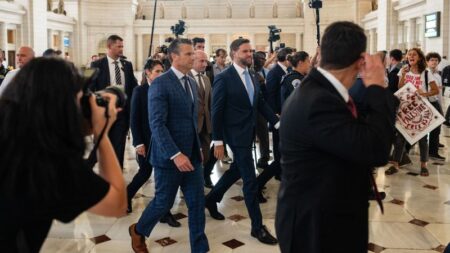The investigation into Jeffrey Epstein, along with the legal troubles surrounding his accomplice Ghislaine Maxwell, has brought to light a vast array of evidence, including millions of records compiled by federal prosecutors. As the public and media scrutiny intensifies, the pressing question arises regarding the contents of these sealed documents, and whether they will ever be disclosed. This issue has led to mounting tension not only for the legal teams involved but also poses a public relations challenge for President Donald Trump and his administration.
In recent developments, the Justice Department, having initially indicated it would release case materials, now finds itself attempting to quell the discontent among not only staunch Trump supporters but also some members of Congress from both parties. These lawmakers argue that the administration has faltered in its promise of transparency, which places additional pressure on it to manage public expectations effectively. This complexity is enhanced by the uncertainty regarding potentially incriminating information that may be concealed within the evidence files.
One of the hurdles faced by the Justice Department is the necessity to redact sensitive information to safeguard the identities of victims and witnesses. Those discussions have led to concerns that a heavily redacted report, filled with obscured text, may exacerbate public distrust. For months, federal officials have wrestled with how best to balance the legal requirements surrounding privacy with the public’s right to access information, particularly given the emotional weight and stakes involved in cases rooted in sex trafficking.
The profiles of several notable individuals have also been tied to Epstein over the years; this has consistently reinforced public interest and sensationalized media narratives. Document revelations, including flight logs and event attendances, have connected personalities such as Trump, past President Bill Clinton, and Prince Andrew to Epstein’s social orbit, although all have consistently denied any wrongdoing. The complexities surrounding Epstein’s death and the subsequent conspiracy theories further muddle the investigation.
The Justice Department is actively seeking to unseal grand jury transcripts related to Epstein and Maxwell’s cases, with Deputy Attorney General Todd Blanche indicating that any information provided by Maxwell will be duly considered. However, legal experts have noted that grand jury testimonies typically contain minimal evidence, often limited to what is necessary to support an indictment. Courts in New York have required the Justice Department to provide more substantial legal arguments as to why unsealing should be justified, highlighting that such instances rarely occur.
In the meantime, massive repositories of information remain with federal authorities, collected from investigations of Epstein’s various properties. These include Epstein’s homes in New York City, Florida, and the private island of Little Saint James. Following extensive searches, a plethora of incriminating materials has surfaced, notably including explicit imagery and documents suggesting further wrongdoing that has yet to be disclosed to the public.
Notably, mixed in with these findings are computers, hard drives, cell phones, and various correspondence materials linked to accusations of wrongdoing. Reports indicate that much of the evidence has been obtained from accusations revealed through civil lawsuits, leading to the gradual public unveiling of certain documents, including depositions taken under oath.
In Maxwell’s four-week criminal trial, testimonies revealed intricate details about her direct involvement and collaboration in the exploitation of minors alongside Epstein. Victims spoke out, sharing harrowing accounts of their experiences. In contrast, the former pilot of Epstein’s private jet testified about prominent guests aboard without witnessing any illicit activities themselves.
Despite the outcry and urgency surrounding the release of new records, the public was initially frustrated by the earlier disclosure of already known information which added little to clarify the sustained inquiries of wrongdoing. Thus, the momentum behind the investigation persists not only from a legal standpoint but also through the unrelenting scrutiny from media and public sentiment driven by insufficient transparency and the complex legacy of Epstein and Maxwell’s intertwined lives. As such, the unfolding saga surrounding Epstein’s extensive network and the quest for accountability in the aftermath of his and Maxwell’s actions remains a crucial focus for society.











